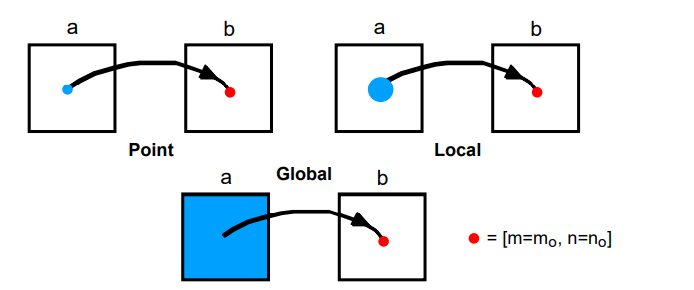There is a variety of ways to classify and characterize image operations. The reason for doing so is to understand what type of results we might expect to achieve with a given type of operation or what might be the computational burden associated with a given operation
Types of operations
The types of operations that can be applied to digital images to transform an input image a[m,n] into an output image b[m,n] (or another representation) can be classified into three categories
| Operation | Characterization | Generic Complexity/Pixel |
|---|---|---|
| Point | – the output value at a specific coordinate is dependent only on the input value at that same coordinate | constant |
| Local | he output value at a specific coordinate is dependent on the input values in the neighborhood of that same coordinate | P2 |
| Global | the output value at a specific coordinate is dependent on all the values in the input image | N2 |

Types of neighborhoods
Neighborhood operations play a key role in modern digital image processing. It is therefore important to understand how images can be sampled and how that relates to the various neighborhoods that can be used to process an image
- Rectangular sampling In most cases, images are sampled by laying a rectangular grid over an image
- Hexagonal sampling An alternative sampling scheme is shown in Figure 3c and is termed hexagonal sampling

